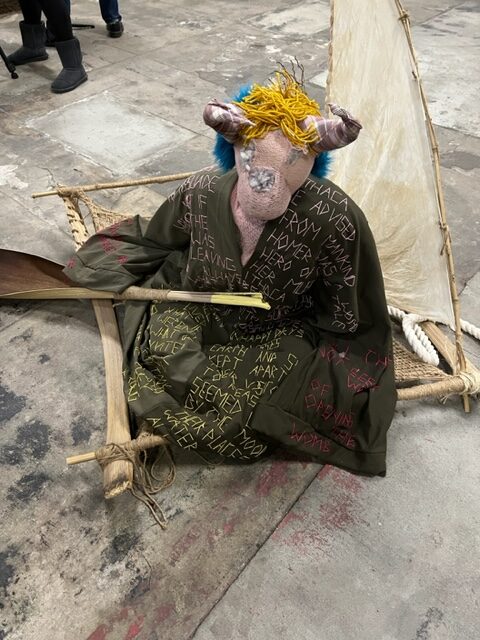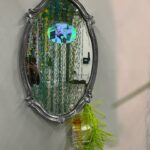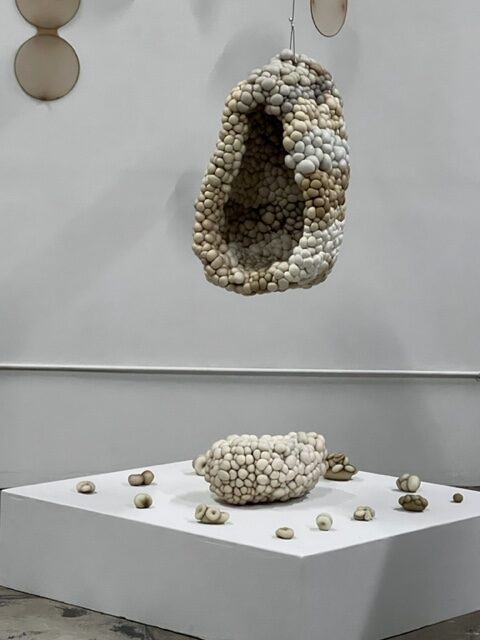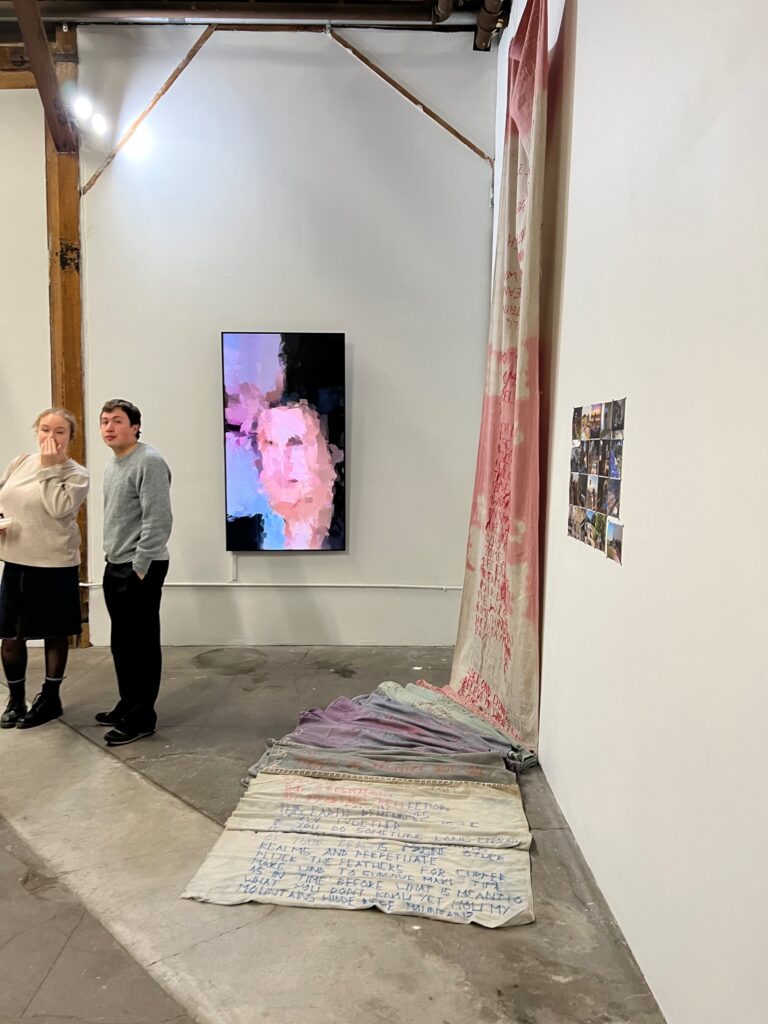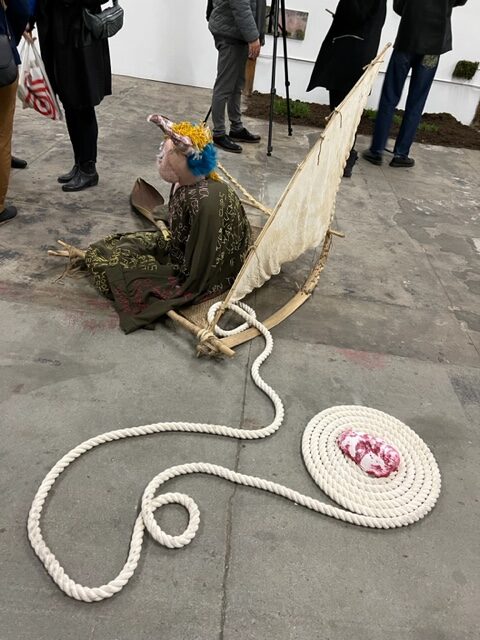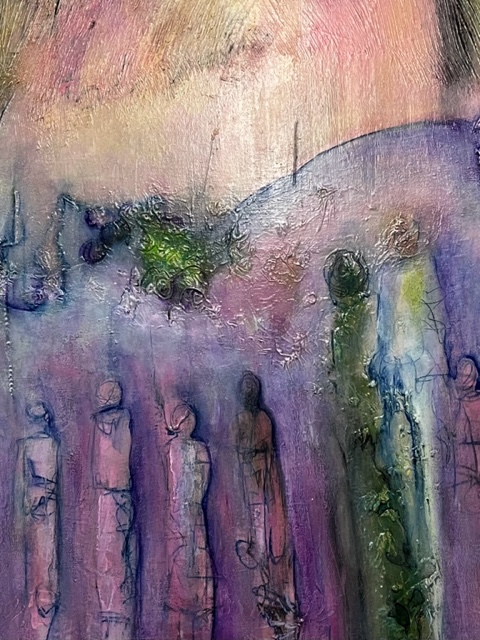Green and lush, fecund and fabulous, artist Charles Derenne claims territory that is dream-like and wistful in a magical space. Using landscape paintings and photographic collage, as well as a brilliant conception of a leafy vending machine selling Poloroid images of fictional land, Derenne invites viewers into unclaimed spaces of both self and environmental exploration.
In his just-closed exhibition at Wonzimer Gallery, Uncharted, Derenne offers an immersive exhibition about humanity’s impact on wilderness landscapes, emotional and spiritual landscapes, and the wonder of the earth itself.
Whether traditional paintings or encompassing draped canvas as in his “Desert de Coronel,” a backdrop with a social-media-perfect chair placed in front of it, the artist invites viewers to inhabit his radiant world.
He shapes that world from a variety of real-life and imagined spaces, from Pasadena’s Colorado Bridge to Echo Park, but perhaps the centerpiece of this exhibition is his large scale “From the courtyard,” in which a pyramid of white takes central focus, lined with palms, an entirely uninhabited yet human-made space. In the prominent right foreground, there is one creature astir – a fly.
Representing the solitude of the artist’s studio as well as the welcoming branches of a tangled forest, the theme most uncharted here is that of sanctuary, a place still being searched for, in an urban park or mysterious jungle. Along with the rich greenery on land, Derenne offers a series of wistful cloudscapes, in pale blues and white. There is also a billboard of sorts, advertising “Land & Air for Sale – Cash Only.” One can sense such a time coming.
Parisian-born, the Los Angeles-based Derenne’s first LA solo show is impressionistic and dreamy, with a green and blue palette that soothes and surrounds the viewer. There are two notable exceptions in the exhibition: one is the diorama of “Picnic at Hermit Falls,” a miniature free-standing landscape that along the hilly green space it shapes, also includes the detritus of a tossed beer can. The pristine can never remain quite perfect once humankind is involved.
The other exception is a series of silver gelatin print photographs within large segments of torn paper, through the holes of which the darkness of humanity’s effect on natural life is revealed, such as graffiti carved into the trunks of trees.
Infused with a sense of longing and poetry, Derenne’s work delves deep into the wonders of nature, the pending loss of our ability to connect with same, and the sense of isolation and loneliness that disconnection shapes in our lives. Entering the exhibition and encountering Derenne’s delicious weaving of place and personhood, his sensitive yet humorous view of nature vs. human nature, is an experience to be savored, perhaps pressed in the book of memory in the same way in which we might save a fragile leaf or flower between pages long unread.
We had the pleasure of taking in the artist’s world after dark, with a candlelit dinner at the gallery. It’s exciting to see that along with the environment the artist created, Wonzimer is continuing to create its own world for artists and viewers to contemplate as well.
Missed Derenne’s work in person? Check out the 3D virtual exhibition here.
Genie Davis; photos by Genie Davis and as provided by the gallery



























